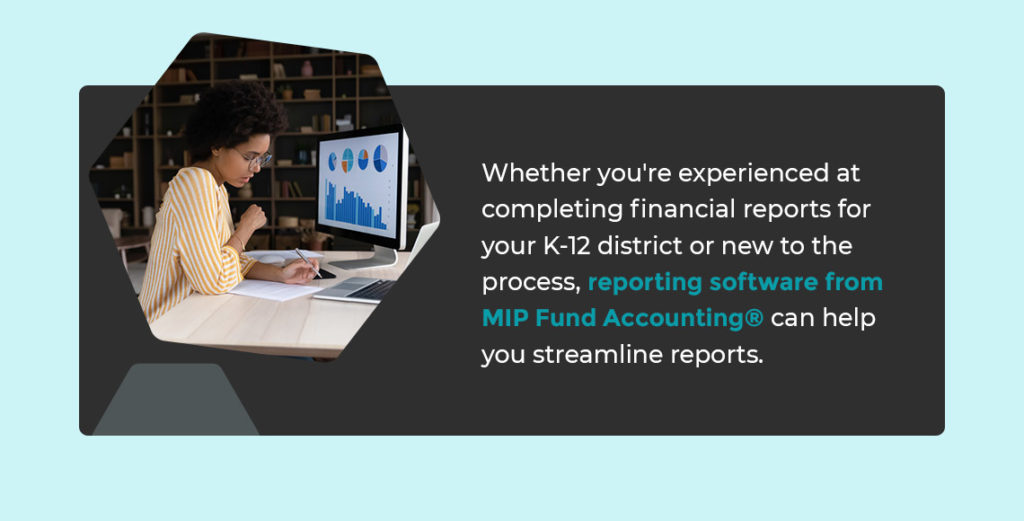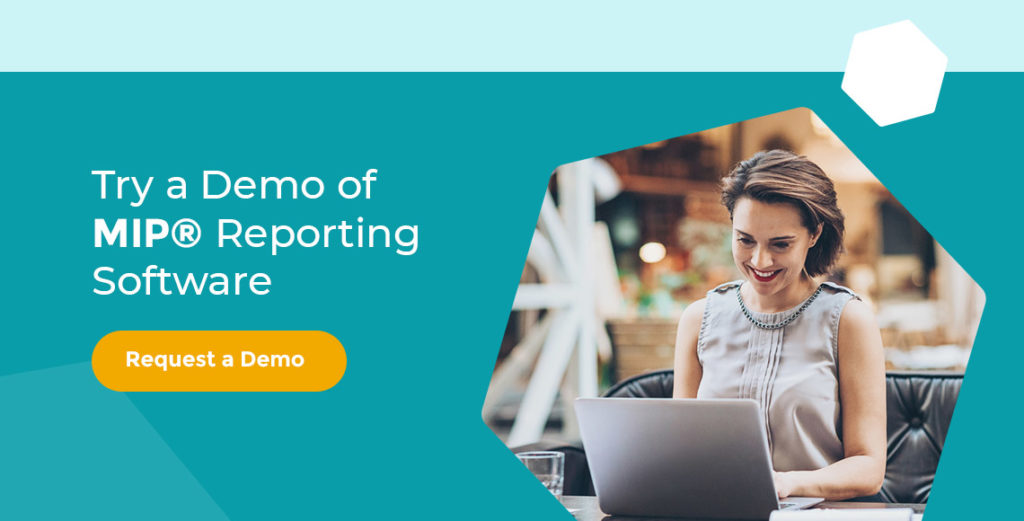Reading Time: 4 minutes
Financial reporting is one of the major responsibilities of a K-12 school district school board. Financial reporting for school districts is an often complex process that requires thorough planning, record-keeping, and documentation. Since school board members have various backgrounds and experiences, completing financial reporting may be a more familiar process for some.
As you prepare to complete financial reporting for your K-12 district, knowing how to assess and understand your district’s financial condition is vital. Implementing effective strategies for managing a school financial audit can help the process go successfully.
What You Need to Know About Financial Reporting
Reporting your district’s financial condition accurately requires planning and a working understanding of financial reporting. This goal may be more challenging in certain situations. For example, although private schools operate as nonprofits, they may experience financial reporting challenges due to their need to report financial information using elements associated with for-profits. Understanding these elements is crucial for effective financial reporting.
Compile a few financial statements to demonstrate your school’s financial health and provide signposts for how it should adjust. Here are the top documents you’ll need for your district’s financial report:
- Balance sheet: A balance sheet displays details about a district’s working capital, including its outstanding debts and available cash. The balance sheet should outline all of your school’s current assets and liabilities.
- Income statement: The income statement displays your district’s total income and expenses for the term or school year.
- Cash flow statement: This statement sets out how much cash your district generates and spends, also called your cash inflows and outflows.
- Budget vs. actual report: A budget vs. actual report shows how closely your budget and actual spending were aligned.
- Accounts receivable report: Your district’s accounts receivable report tracks how much money you’ve invoiced to parents and how long they’ve been outstanding.
- Net profit margin: The net profit margin shows whether your district is making or losing money.
- Daily expense and sales report: A daily expense and sales report clarifies a district’s sale volume over a year or term.

Streamline Reporting With MIP®
Whether you’re experienced at completing financial reports for your K-12 district or new to the process, reporting software from MIP Accounting® can help you streamline reports. The MIP nonprofit accounting solution is purpose-built for the education sector, providing the reporting, compliance, and budgeting tools your district needs to ace your next financial audit. MIP® reporting software takes the work out of financial reporting for school districts by providing automated reports you can present to stakeholders exactly how you see best.
You can create and share financial reports effortlessly with 130 out-of-the-box reporting templates, a drag-and-drop editor, and nearly limitless customization options. Financial reporting software from MIP® enables automated report generation in minutes instead of days, so your district can spend more time telling its financial story and analyzing data to implement improvements. Create budget vs. actual reports, forecasting reports, and more.
Tips to Prepare for an Audit
Annual school district audits often require months of effort, but the reward is a roadmap that will help guide your district as it makes financial decisions for the future. You can streamline the audit process by ensuring you have the proper financial statements for your school financial audit and strategizing for success.
Here are a few strategies you can use to prepare for your next school financial audit:
1. Review Recommendations From Your Last Audit
Go through the recommendations your school district received from your most recent audit and identify whether you implemented changes to make improvements. If you took action that resulted in progress, gather the reports that indicate these changes. If your district didn’t follow a recommendation, sit down to write why you didn’t and what solution you used instead.
2. Delegate as Much as Possible
Although many people in your school district will be part of the audit process, appoint one person to oversee it and ensure everyone meets deadlines. Having a supervisor helps your district prepare thoroughly. Select someone with experience with financial reporting and school financial audits, which can provide valuable insight.
Once you’ve chosen a person to oversee the audit process, delegating specific tasks to other staff members is crucial for meeting deadlines and providing thorough reports. Begin early by assigning staff members to complete specific elements of the process.
3. Use Reporting Software
Using reporting software is another strategy for lessening the workload of reporting and freeing up more time for other tasks in the process. For example, MIP Accounting® simplifies audits with features like:
- An auditable general ledger.
- Transaction reports.
- A system audit trail.
- A human resources management audit trail.
4. Communicate Frequently
The auditing process can be long and taxing. Prioritize frequent communication with your school district’s auditor to ensure you follow their requests. Staying in contact with your auditor throughout the year may help you ease some of the strain of classifying and recording certain pieces of information when it’s time for your audit.
5. Allot Plenty of Time for the Review
Give yourself plenty of time during your review. Speak with others who have gone through a K-12 audit and understand your district’s requirements to determine the amount of time you should expect to spend on the review process. Take your time to review documents before submitting them to catch any mistakes.
6. Prep for the On-Site Visit
Before the auditor visits your district, confirm the date, time, and place with the registrar. Ensure the auditor has received the appropriate documents and collect your notes for the meeting. Think ahead to items the auditor might question or wish to discuss further and make a note so you’re prepared to review them.

Try a Demo of MIP® Reporting Software
Managing financial reporting for school districts is a complex process. Your K-12 district needs a robust software system that meets its reporting needs, streamlines the audit process, and keeps all team members on the same page.
At MIP Accounting®, we provide reporting and accounting software designed for the education sector to help your K-12 district gain insight into its financial status and develop actionable steps to meet its goals. Our software solution enables you to manage your district’s finances with comprehensive reporting capabilities, numerous budgeting and forecasting tools, and system auditing.
By embracing automation in the school financial audit process, your district can focus on analyzing financial data and creating strategic goals to help it achieve its objectives. Request a demo of MIP® reporting software to see our software solution in action.
Share this post





